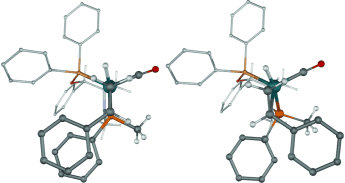The origin of stereoinduction by chiral aminophosphane phosphinite (AMPP) ligands in asymmetric hydroformylation was investigated with a theoretical approach. The roles of the stereogenic center at the aminophosphane phosphorus atom (NP*) and of the chirality of the backbone were analyzed by considering three experimentally tested cases: 1) P-stereogenic yielding high ee, 2) P-nonstereogenic yielding low ee, and 3) P-stereogenic yielding low ee. We succeeded in reproducing the experimentally observed trends for the three studied AMPP ligands. Our results indicated that alkene insertion into the rhodium-hydride bond is the selectivity-determining step, and not alkene coordination. Additional calculations on model systems revealed that the different nonbonding weak-type interactions of styrene with the substituents of the NP* stereogenic center in an axial position is responsible for stereodifferentiation. The chirality of the AMPP backbone plays a secondary role. The rationalization of the stereochemical outcome is not straightforward, because two competitive equatorial/axial reaction paths, showing opposite asymmetric induction, must be considered. Construction of stereochemical models and evaluation of stereoinduction for novel ligand systems suggested that two prerequisites are required to improve the performance of AMPP-type ligands in asymmetric hydroformylation: 1) combination of stereorecognition and stereohindrance by substituents at the NP* atom, and 2) more rigid backbones.
